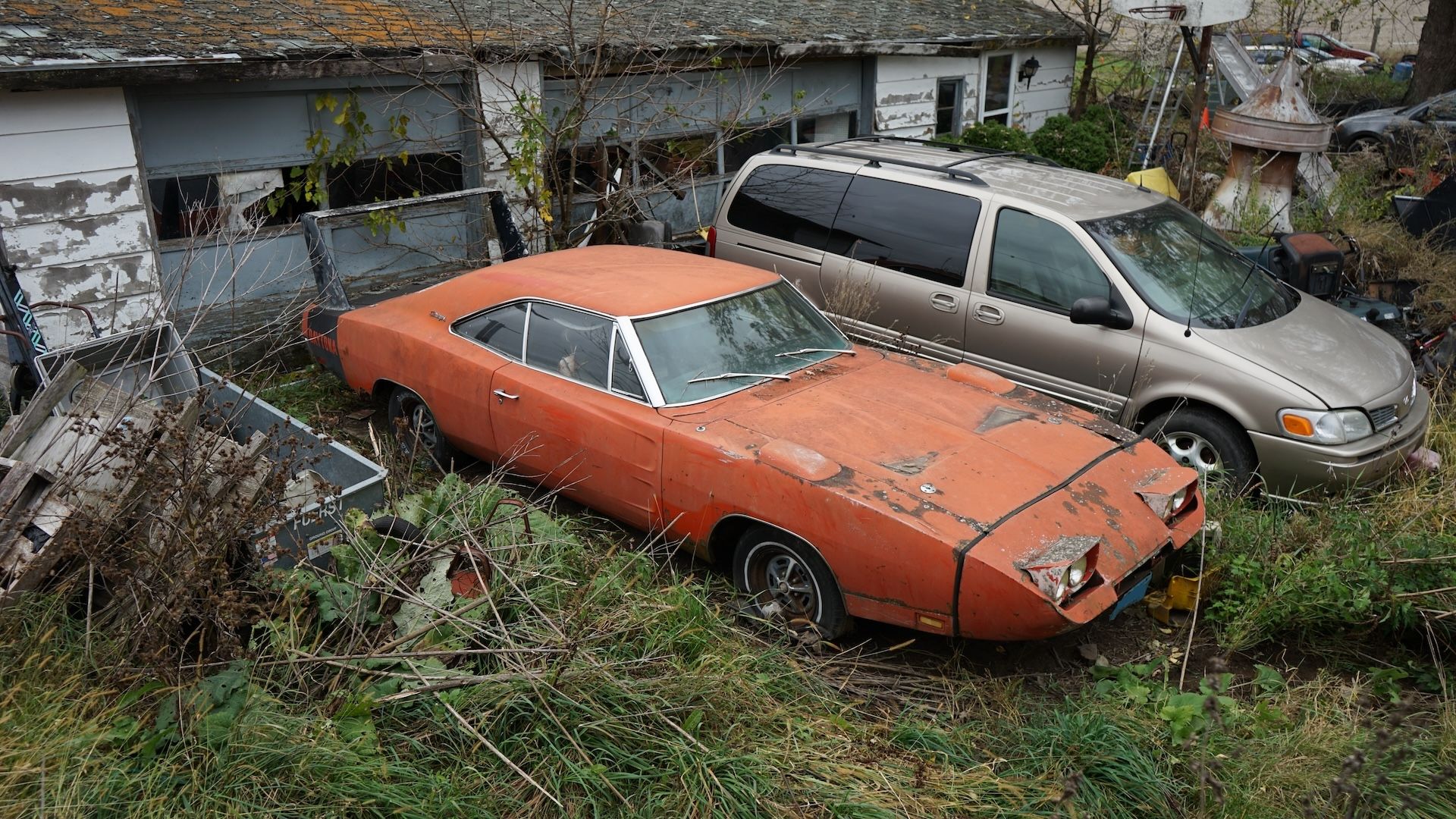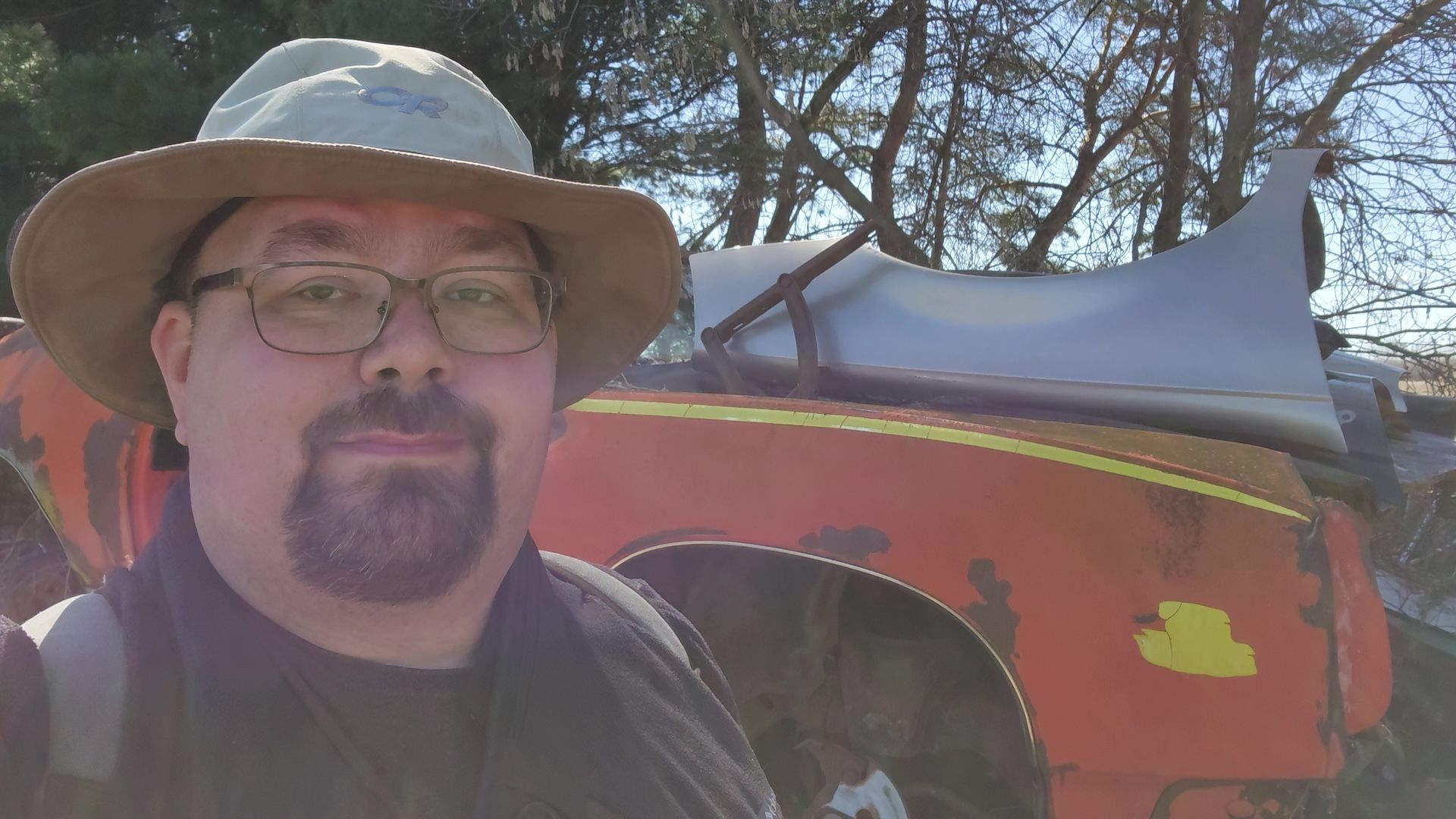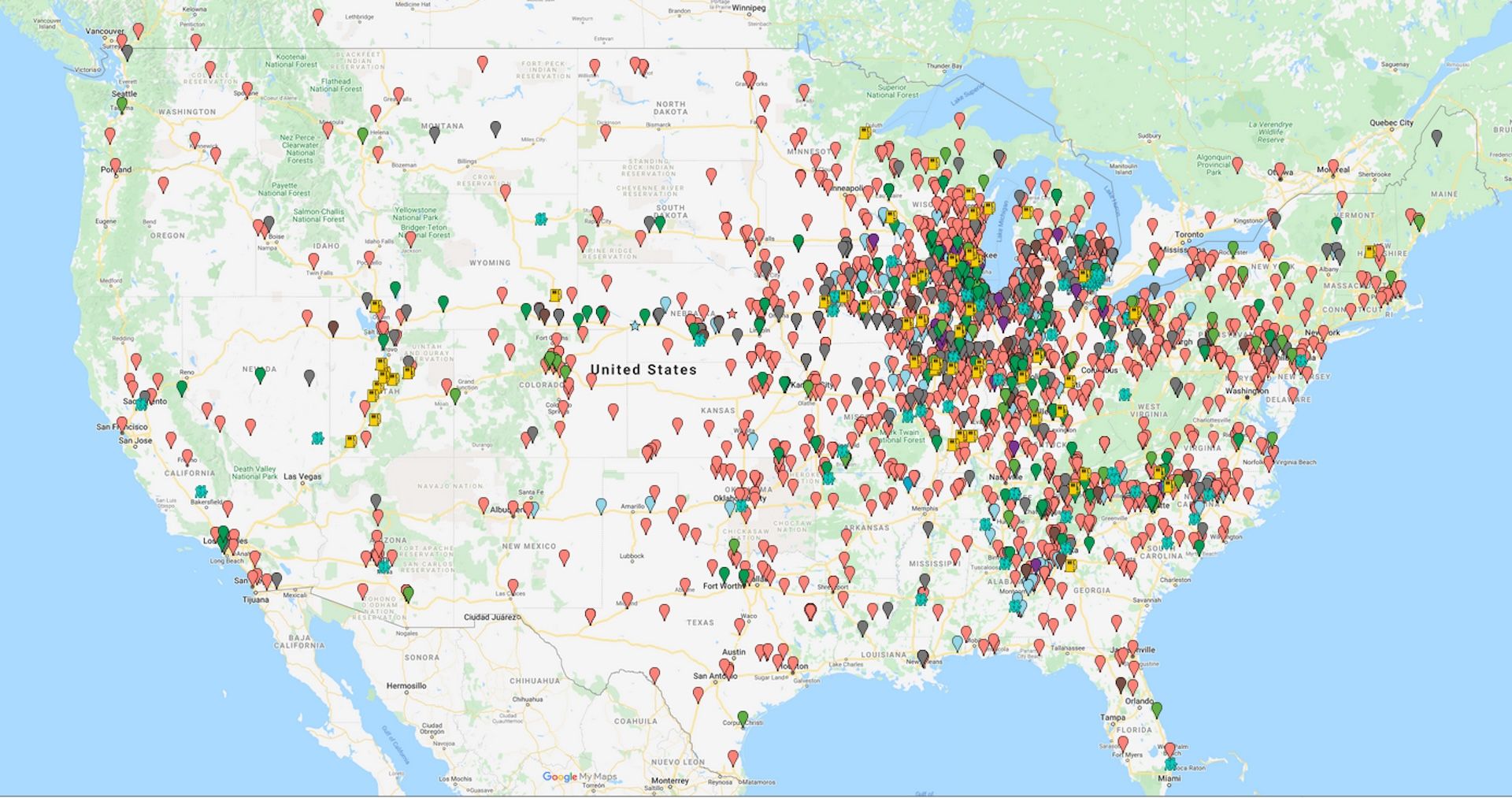Key Takeaways
- Ryan "The Auto Archaeologist" Brutt spoke to HotCars about what he's learned from hunting barn finds for over 20 years.
- Brutt shared the most unusual places he discovered rare classic cars and detailed his methods for finding them.
- We also discussed the tools he uses, how he prefers to document cars, and the best way to strike up a conversation with owners.
For over 20 years, Expert Barn Find Hunter Ryan Brutt has uncovered rare and coveted classics. What started out as a side hobby has turned into a social media phenomenon, featuring a steady stream of unrestored 1960s muscle cars and pony cars posted on his Auto Archaeology YouTube channel and TikTok. Brutt's platform has attracted a healthy following of enthusiasts over the years, including Constance Nunes and Ralph Gilles.
In an unearthed interview, I spoke to Brutt in July 2022 about how he got into barn find hunting, the most rewarding classic cars he's ever found, and what advice he has for enthusiasts looking to break in.
The following interview has been edited and condensed.
When did you start doing this?
Ryan Brutt: I started in the late '90s when I got my driver’s license. I found a '71 'Cuda in a garage in Chicago, and it flipped a switch. I thought to myself, "If I could find this one by accident, what would happen if I put some effort into it?" It was just sitting for 30 years in this garage. It blew my mind.
I found a '71 'Cuda in a garage in Chicago, and it flipped a switch. I thought to myself, 'If I could find this one by accident, what would happen if I put some effort into it?'
Share what a typical day looked like early on.
Brutt: I would just drive around. My dad and his friends were into cars, so I’d ask them if they knew anything. That’s some of my earliest stuff. But I really started going when — and I still do the same thing to this day — I'll hit up small towns. When I go to Wisconsin or Illinois, I'll go to the old auto parts store, the local restaurant, or whatever's around. And I don't reveal who [the owners] are or where they're from. I just want the story behind "Why are their cars sitting?" If you go to the old parts store, they say, "Oh yeah, Bob down the road had a GTO. You know, I haven't seen that thing in 20 years. Go down here, make a right, and tell Bob that Nick at the auto parts store said 'Hi.'" That's literally how I started doing it, and I still do it to this day.
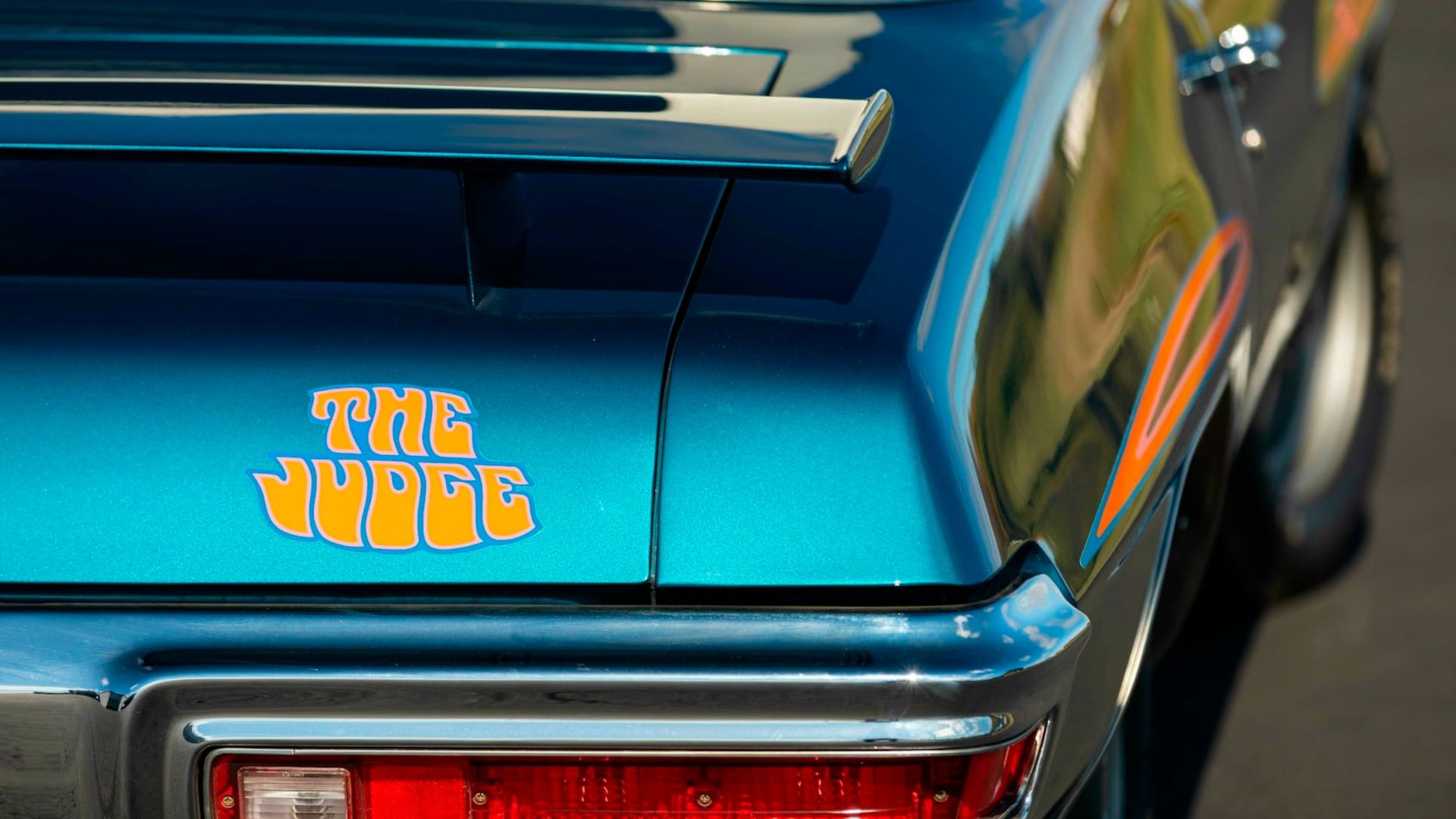
Rarest Pontiac GTO Ever Produced
The Pontiac GTO was built for the everyman American muscle car enthusiast, but this one remains the rarest of its breed.It's chasing the story like a detective, investigating one lead after the next.
Brutt: Absolutely. Let's say Bob with the GTO knows Sam down the road with a Chevelle, and then it justs keep going. I could spend an entire day tracking down lead after lead, just by stopping at a gas station. I've done it many times, and you never know what's going to pop up.
Where are you located?
Brutt: I live in Chicago, but my family has a place in Wisconsin about two hours north. I can be there for a few days, and I'll hit up a bunch of stuff out there. I have friends who live in St. Louis who have a spare [bedroom] that they let me stay in. Same thing in Detroit. I have friends all over the country.
Does geography matter much to someone who wants to become a barn find hunter? Is the Midwest the Mecca of barn finds?
Brutt: Yes and no. It’s all about land. In the Northeast, there's a greater population, but they also have stricter laws. You can’t have a GTO sitting in your backyard anymore in certain places. There are laws against it. But there are still tons of stuff in garages. When you start going into the rural countryside – places like Pennsylvania and North Carolina – it's NASCAR country and surprisingly rich, so there’s stuff everywhere. The Midwest is great because there's a lot of land and a higher population. So stuff can be shoved into the backfield and forgotten about for 50 years without harming anyone.
You mentioned going to local auto shops for tips, the kind that are long-time staples of their communities. Do you find there are fewer of those around these days?
Brutt: There's still a bunch in rural communities. I went to Northern Illinois University in DeKalb, and I worked at the NAPA. We were the only auto parts store in town until the year I graduated, and Advanced Auto moved in later on the other side of town. But for however long it was there, it was the only game in town – probably the only game in town for 20 miles in every direction. That’s still true in some cases. What we call “graybeards” are definitely becoming fewer and fewer. It doesn’t necessarily have to be an auto parts store, though. There are still small restaurants. I’ve stopped at mechanics shops, and I will stop at a farm if I see something cool. As long as you’re not trying to steal the stuff from them, usually they’re pretty cool about showing you stuff.
Talk more about the graybeards.
Brutt: A lot of the old parts stores are run by old men who have gray beards. It's literal. I know a dozen off the top of my hand. It’s the old guy who knows the old cars and uses the old books, because they’re the guys that usually run the place, or the managers, or the guys who own it. They’re usually the guys in charge who have been there the longest. There's the usual burn through of young guys, but there’s always the old guys in the back, somewhere.
How do you document barn finds?
Brutt: I used to only do photography. When I first started, I had a blog, and I still do. Then I started writing for Hot Rod Magazine. I did that for seven years. I would always document a car – try to get as many good shots of the exterior as you can. Video was secondary for the longest time, now it's moved to the forefront. I still take as many pictures as I can, but I have video in the back of my mind of what I want to shoot. Then I always interview the individual who owns the car, find out the history, and I always keep their name private. It's always, "Why is this Hemi 'Cuda sitting in the guy's backyard for 50 years?" There must be some interesting reason why. And I always try to relay that in a video or post.
Do people ever reach out to you with leads or tips?
Brutt: Absolutely, especially since working with Hot Rod. People often email and tell me, "Oh, I have this Chevelle in my garage." I'm all over social media. If someone knows of something cool out there, they let me know.
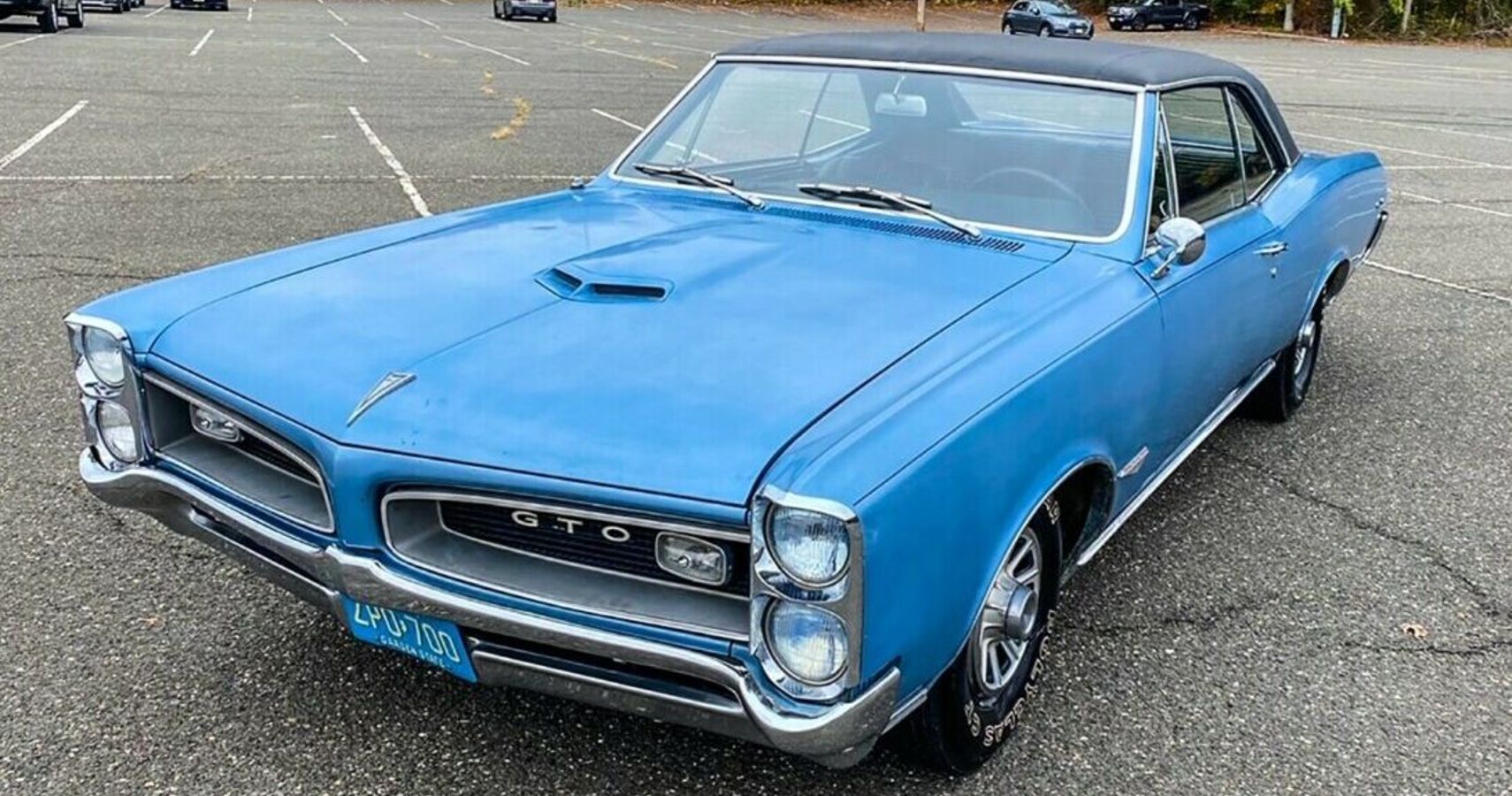
Check Out This All Original 1966 Pontiac GTO Barn Find
This beautiful Fontaine Blue 1966 Pontiac GTO came out of 30-year storage and is ready for its new home after a recent service.How do you organize and keep track of leads you receive?
Brutt: I have what I call my treasure map, and every lead and every story I have goes in this app. I put a pin with the information on it. I have about 2,000 pins for barn finds. People are always contacting me about the map and trying to get a hold of it because I’ve posted about it in the past.
I have what I call my treasure map, and every lead and every story I have goes in this app. I put a pin with the information on it. I have about 2,000 pins for barn finds.
What app do you use?
Brutt: It's called Google MyMaps. There's a paid one I also use called Mango. Google MyMaps used to be a lot better, but they changed it recently. It allows you to pin stuff on a map – you can make it private or public. You can leave comments and add a picture too. I normally don't because I don't have photos yet.
Seems essential to have if you’re going to hunt for barn finds.
Brutt: I used to have a spreadsheet for when I would go on adventures, but it was really hard to figure out what I was going to hit up because Illinois is a very long state and Wisconsin’s more of a round state. So I said, "Let me see if there’s a map program that I can put everything into," and I found Google MyMaps. It changed everything.
We had trouble finding Google MyMaps and emailed Ryan earlier this week for more information. Here's what he told us:
"Unfortunately Google MyMaps the app is dead, they now just wrapped it up in the Google Maps app as a subset. You can still get the separate platform on PC though."
How long have you been using this app and tracking barn finds on your treasure map?
Brutt: I can actually look. Hold on. [Looks at his phone]. I created this one in February 2012.
Do you browse listings online, like Craigslist or Facebook Marketplace?
Brutt: Oh, absolutely. I'm on all the barn find and Facebook forums. A lot of them have learned not to post locations, but sometimes people do. I'm actually a really good detective. I found a Hemi 'Cuda from one picture alone. I also follow a bunch of guys on Instagram. There's not a lot on TikTok. I have saved search terms on Facebook Marketplace, things like 'barn finds' and 'rusty car'. But things like that usually pop up pretty quickly, and I'm not on there 24 hours a day.
How in God's name did you find a Hemi 'Cuda based on one photo?
Brutt: I had heard rumors about this purple Hemi 'Cuda, and I was able to figure out it was in one of two towns in Utah – but that's all I knew. No one would tell me exactly where it was, and then someone posted a single picture of the car on Facebook. It was taken far enough back that you could see a stadium light in the background, and from the direction of the sunlight, you could see it was either to the northeast or southwest. I went to both the towns, and I looked up high school fields. The lights weren’t the right style in the first town I went to. So I went to the second town, found a high school, and there it was – there were the same lights matching the style from the picture. So I’m like, "Ok, well I know it’s either this corner or that corner," and from the picture you could see the roofs around that Hemi 'Cuda. One roof was tan, one roof was white, one roof was black. So all I did was go to Google Earth and try to match it up, and there it was in the northwest corner of where the stadium was, and there was the Hemi 'Cuda in the backyard. Clear as day on Google Earth.
Did you ever see the car in the flesh?
Brutt: Yes, I was fortunate enough. I had to deliver a car for my sister in Salt Lake City, so I went about 20 or 30 minutes off the route to see this car. The owner was super cool – I was just talking to him the other day. I stopped and talked to the guy for like two hours. It got dark but it was hard to leave. Really nice guy. It all worked out wonderfully.
You mentioned being a good detective. How so?
Brutt: I look at all the available information. It's always about the next step. Like I said, I had one of two towns originally – that's all I had. So I said, "Ok, I'll go to these two towns and ask around." I'll go and talk to the graybeards. Then the picture came up, and that picture had information. I was able to literally work it out through deduction. You always try to deduce what the best answer is with the information you have.
Hunting for cars like this forces you to adapt your lifestyle. I imagine you're making lots of detours.
Brutt: Absolutely. I do it for – not to sound selfish – I do it for their rarity. The rarer the car, the more likely I will go out of my way. I mean, if it's an '87 Corvette, "Eh, whatever." But if it's a '63 fuel-injected split-window [Corvette], "Ok, I'm willing to go drive a little bit." Just some quick examples: in January, a guy dropped me a line. He said, "Hey, I just bought a few barns full of Hemi cars" – and you guys covered it – "Hemi cars and Challenger T/As and all of that. I'm going to start moving stuff here in a week if you want to come down to Arkansas." I drove 12 hours to Arkansas on a Saturday, and the water pump went out in my car. After 250,000 miles, it's bound to happen. I also got a lead last year on a '68 Shelby GT500 – a fairly rare car. I literally found out about it on a Saturday, on Sunday he sold the car, and on Monday the guy had moved it already. So on Monday I talked to him, and he's like, "If you want to come see it, we're going to start working on it."
This was the new owner you talked to?
Brutt: Yes, the new owner. He said, "If you want to come see it, you've gotta come see it tomorrow." That's like a three and a half or four-hour drive. "All right, guess I'm going down there." I got up early and drove down there. It was in Springfield, Illinois. I got there before noon, which is the worst time to shoot a car. You never want overhead sunlight. But I shot video, pictures, rolled the car back in, and I thought, "Hmm, it's still daylight. I feel good. I'm gonna drive home." Turned around and drove four more hours home. "Why not?"
[Laugh]. That's commitment.
Brutt: If I don't feel great, I'll hang out and sleep it off, and then drive the next day. But if I feel good, I've done 12 to 14 hour drives in the past. I've done it a few times over the years. I did that Hurst Olds in 2019 up in central Wisconsin. And I'm like, "It's a four-hour drive. I'll be fine." I drove there and just turned around after and came back.
The term "barn find" is not always literal. Abandoned classics can turn up anywhere. Where's the most unusual place you found one?
Brutt: The rafters of a guy's shop – that was a good one. That was a Hemi Superbird. The owner works on semis, so he needed it out of the way. He built a rafter system, and stuffed this Hemi fricken Superbird up there. That was a good one. I found a bunch in tractor trailers, giant old drums on farms – if you put them on the side, and you weld on doors – I know a few people who have done that. I found a bunch in old schools that were converted into little garages. There's a guy in Kansas who bought the elementary school he went to. The gymnasium was his main garage – the aisle was wide enough to where he could get cars in, and he just took down the doors, and he would just stash cars in the old classrooms. And the floors were really good wood. Found an LT1 ‘70 Corvette in a converted church. That was neat. Little Corvette. Backyards, farm houses – I found one in a house. The guy took down the wall, parked it where the dining and living room used to be. There was an auto parts store in Chicago, and there was this brick room without a door in the back. We're like, "Why is there a brick room?" We took down the wall, put a hole in it, and found a ‘71 Monte Carlo and VW Bug. We got the Monte Carlo running. It was the weirdest thing – it made no sense. Why brick them in?
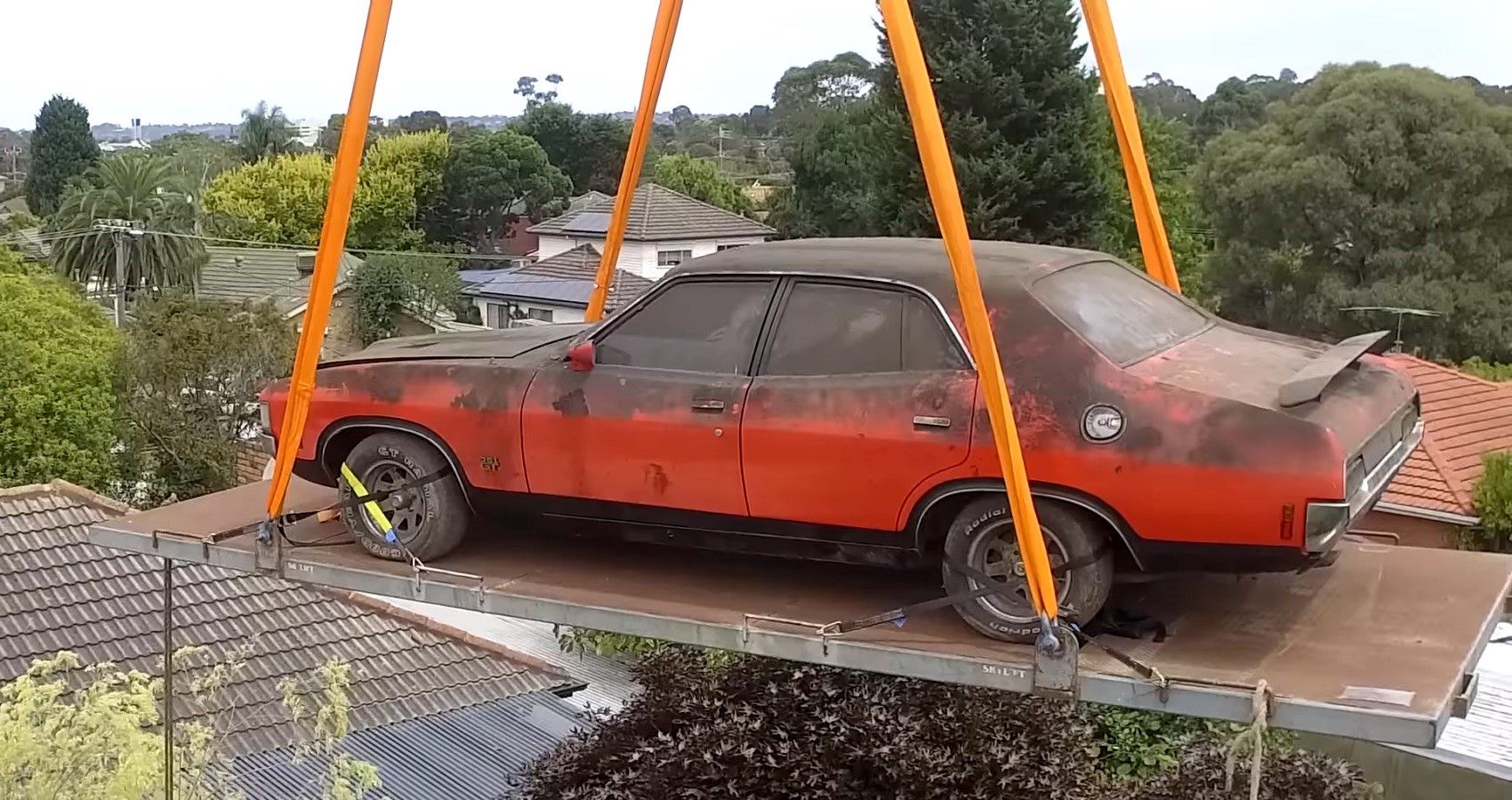
This Epic Barn Find Requires A Crane To Rescue A Ford Falcon From Its Landlocked Prison
The classic car has a 351-ci engine and a lot going for it although only a crane could rescue it from its 30-year barn home.Were they still in decent shape?
Brutt: Yeah, because brick holds in moisture. The Bug was in worse shape than the Monte Carlo. We don’t know how long it was in there. The Monte Carlo had about 70,000 miles – it was a used car, but it wasn’t anything crazy. So we got that one running. I had pictures somewhere, but that was back when the 486 was a fast computer, and I think they’re all gone now.
I wish [the photos] were still available.
Brutt: I have everything I've shot digitally backed up since 2005. Even things I didn’t shoot digitally. I buy packs – remember those disposable point-and-shoot cameras? I buy multi-packs of those and shoot through them. At Walmart you could put them on CD. I always chose the CD option, so I have a stack of CDs of barn finds. Thankfully, those are backed up on my hard drive as well.
Those are some wild locations you mentioned. The abandoned school sounds elaborate.
Brutt: It was ridiculous.
What's the farthest you've driven or flown to see a barn find?
Brutt: I don't fly. I'm a big guy. I know some extreme barn finds – like multi-million dollar cars that are sitting – but it's expensive to go. When I used to go to Carlisle, Pennsylvania, for the Mopar show there, I would hit up a bunch of stuff on that map. The furthest one I’ve driven to is probably the Hemi 'Cuda in Utah. The furthest for an actual barn find was probably the Arkansas one – a 12-hour drive there, and then 12-hour drive back. That’s probably the furthest, on purpose, for a barn find.
Talking to owners sounds like an art in and of itself. They may not know your intentions right off the bat or understand what you're about. How do you navigate social situations like this? What do you tell owners to gain their trust?
Brutt: If I'm dropping in on someone, I show up to the guy's door, knock on it and say, "Hey, my name's Ryan Brutt. I drive around documenting cool cars in neglected situations. I’m not here to buy your car. I’m driving a Chevy Equinox at the moment – obviously, I have no money. But why is this Hemi 'Cuda sitting in your backyard? What’s the story?" I usually have an issue of Hot Rod with me. "I don't share where you are or who you are. I just want the story of the car." Ninety-nine percent of the time, they're more than happy to tell me because there's a reason they're keeping the car. It's either they gave it to their wife, or they took their kids home in it. There's an emotional attachment to it, and they want to share that with people who aren’t threatening them. If you go to them, knock on their door, and say, "Hey, is that Hemi 'Cuda for sale?" That's a yes or no question. Ninety-nine percent of the time, it's "No." There's no moving past that. You can't just go, "Oh, can I see it anyway?" You're obviously trying to buy the car from them. I tell them, "Hey, I'm leaving my business card in the glove box. If you want to sell the car, either I would be interested in it, or I know people who would pay you fairly. I’m not saying they'll give you Barrett-Jackson prices, but we can look at what’s available, determine it's worth, and come to a fair price. Or, if you’re interested, I know where to get parts." Let’s say it’s a Hemi 'Cuda. "If you want to get this car running and driving, I know where to find the stuff to get it going." [They say,] "Oh, I need a brake master cylinder for a ‘78 Hemi 'Cuda." [I tell them,] "You can go to RockAuto and get the cheapie, or you can go to Classic Industries and get the proper one." And the third option is, "If you want to restore the car, I can point you in the direction of the best Mopar guy, or the best Chevy guy." I’ve helped put 30 or 40 cars back on the road.
If I'm dropping in on someone, I show up to the guy's door, knock on it and say, 'Hey, my name's Ryan Brutt. I drive around documenting cool cars in neglected situations. I’m not here to buy your car. I’m driving a Chevy Equinox at the moment – obviously, I have no money. But why is this Hemi 'Cuda sitting in your backyard? What’s the story?'
Do you offer this kind of advice free of charge?
Brutt: Absolutely, because I don't want anyone to get burned. I want them to know what the car is worth. That way he doesn't get scammed. I just heard a story about one of the finds I documented in 2019. The poor mom got scammed out of the cars – I wasn't involved in it at all. I came into it about a year before. I want people to have all the information available to them, so that no one gets taken, because that’s bad for the entire industry. That’s why I try to educate everyone with whatever I can provide for them.
What motivates you to find these cars?
Brutt: It’s the thrill of the hunt. I love finding cool old cars in barns and fields. The stories behind them are usually amazing. Finding the Hemi 'Cuda, something that's worth quarter of a million fully restored – it's like, "I found it in a backyard in Utah rotting away," and it gives me goosebumps. It feels like Indiana Jones. That’s why I call myself "The Auto Archaeologist," because I’m documenting this historical artifact for posterity, because who knows what tomorrow will bring?
I love finding cool old cars in barns and fields. The stories behind them are usually amazing.
If someone wants to document their own barn finds, what should they know?
Brutt: Make sure [owners'] house numbers aren't visible. Be vague. "I'm in Illinois," or "I'm in Chicago." That is vague enough to where they won't be tracked down. If it's a 40-year-old license plate, it's probably not in the system anymore. But you always err on the side of caution. VIN numbers can be tracked and worked out. I try not to show VIN numbers or production numbers. I’ve heard horror stories about cars getting stolen because someone posted, "I'm in Chicago, Illinois, at the corner of Warren and Foster. This guy’s car has been sitting here 40 years." A week later, someone comes by with a flatbed, yanks it out, and it’s gone. It does happen. It sucks, and that’s why you have to be very studious about it.
I'm wondering if there's ever been a time when you feared for your own safety. Are there any precautions you take to keep from going too deep down the rabbit hole?
Brutt: Oh yeah, I'm a big guy. There are rafters that will not hold me anymore. I've fallen through the roofs of rusty cars before. I seriously hurt my leg and foot falling into a peppermint pit while shooting a '69 Road Runner, so you always have to be aware of your surroundings. I’ve been in some barns I probably shouldn’t have been in – I've been very careful, and worked through it – but it’s always a risk. Nails in old boards, and all that. There’s been places like, "I know I can’t squeeze through those two cars." There was this one guy, "Oh, just go up this old wood ladder," and I’m like, "Do we have a metal one?" You know, maybe one that’s not a 100 years old full of termites?"
I've fallen through the roofs of rusty cars before. I seriously hurt my leg and foot falling into a peppermint pit while shooting a '69 Road Runner, so you always have to be aware of your surroundings.
What advice do you have for someone looking to start hunting for barn finds? What's something you wish you would've known when you first started?
Brutt: Talk to people, as long as you tell them what you're looking for. Lots of people ask me, "How do you find all the stuff?" I just started talking to people. I had no dignity or self-respect. I'll go up and talk to someone. All they can do is say no. If you're up front, tell them who you are. Just stop at a farm, if you see an old truck in the field, and ask, "Why is this Chevy sitting in your yard? Looks cool and I’m into that stuff." As long as they see you’re interested in the same things they are, they’re usually more than happy to talk to you. That’s all there really is to it. Just talk to people in the same circles about what you’re interested in.
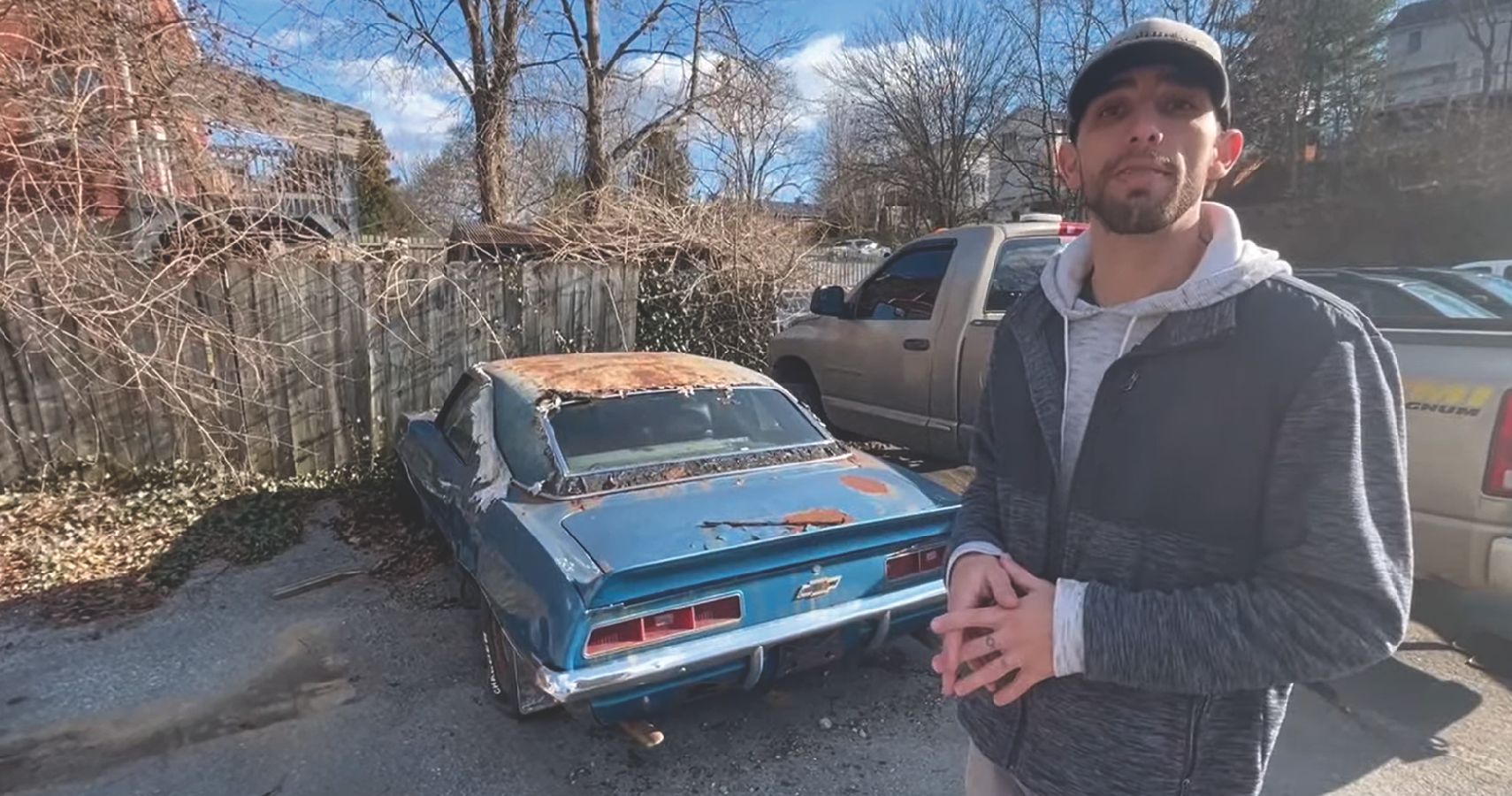
Learn How To Identify A 1969 Chevrolet Camaro Super Sport With This Barn Find Specialist
Parker from Backyard Barn Finds gives his expertise about this 1969 Camaro, as well as a 1969 Ford Mustang Mach 1 and a 1959 Cadillac.Most people are friendly and willing to talk.
Brutt: Absolutely. In all my travels, I’ve absolutely had people who’ve said no. I say, "Ok, thank you. Here’s my information. Here’s my card. If you ever want to talk, I’d love to talk to you again." In all my experiences, I can only think of one really bad one. I don’t trespass – people have guns. It isn't worth it. None of my pictures are from trespassing on private property. As long as you’re up front and straight with people, it’s usually golden.
What lessons have you learned from doing this for 20-plus years?
Brutt: I learned very quickly not to ask if it's for sale up front. Another thing: get good at photography. There are enough tutorials out there. I was terrible when I started out. I didn’t get cars in the frame. I would take a picture of the VIN number, and it would come out fuzzy because I didn’t know how to focus the camera up close. If you really want to document this stuff, take a photography class if you can. There’s enough stuff online. You can learn how to shoot cars. I’m still learning to this day. I listen to podcasts every week about how to be a better photographer. Now I’m trying to be a better YouTuber. Always be learning, that’s the key. It’s never a detriment.

